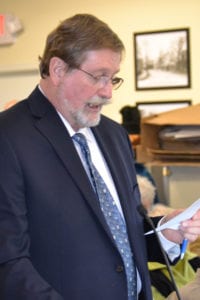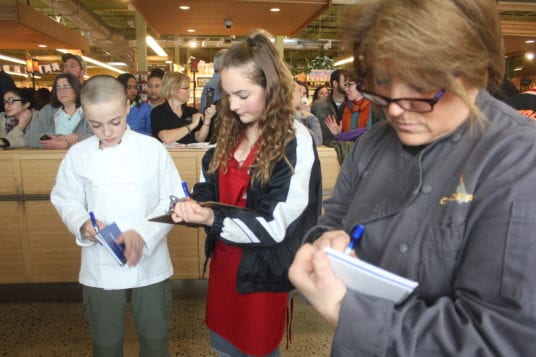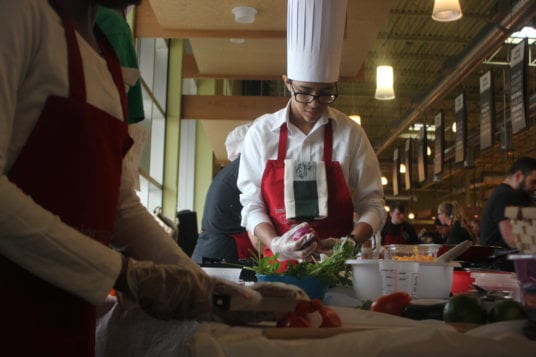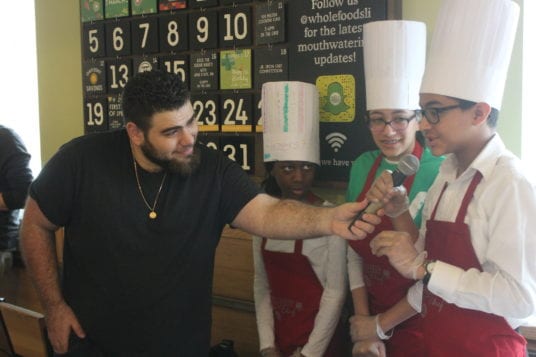For nearly 50 years, Setauket’s Peter Paul was a prominent member of the Department of Physics and Astronomy at Stony Brook University. With his death March 11 at the age of 84, the physicist left behind a legacy that will be remembered for years to come, especially by his former colleagues.
A native of Dresden, Germany, Paul received a Ph.D. from the University of Freiburg, and immigrated to the United States when he accepted a postdoctoral position at Stanford University.
Linwood Lee, emeritus professor, recalled when he recruited Paul in the late 1960s. A former co-worker of Lee’s worked with Paul at Stanford University and told him how impressive the physicist was. Lee knew he had to hire him during a time when he called coming to Stony Brook University “an adventure” because the school was in its infancy.
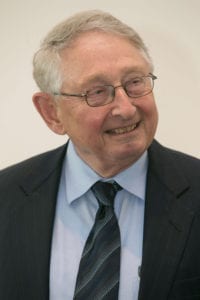
Lee said Paul was marvelous, and he’s grateful he recruited the professor.
“We established a laboratory here, and from the moment he got here, he was the driving force to make us all do better,” Lee said.
Paul was a professor at the university from 1967 to 2015 and later a distinguished service professor in the department and served as chairman twice during his tenure. One of Paul’s greatest achievements was building a first-class nuclear physics group along with his colleagues at Stony Brook.
In 1973, when the physicist spearheaded a small group to develop, design and construct Stony Brook’s superconducting linear for heavy ions, an improvement of the university’s existing Van de Graaff accelerator, it became the first such machine at a university lab.
Gene Sprouse, now a distinguished John S. Toll professor at SBU, was a graduate student at Stanford University when he met Paul. He later came to Stony Brook and worked on the accelerator project with him.
“That machine was really unique. It was a very powerful accelerator at a university,” Sprouse said.
Paul Grannis, another of Paul’s colleagues at SBU, said Paul was very proud of the accelerator project.
“It enabled research that had previously not been possible to be done, and it was quite a unique facility in the country,” Grannis said. “I know Peter was very proud of that and considered it one of his major achievements.”
Paul became a member of the Nuclear Science Advisory Committee in 1980, and as chair, led the development of the 1998 Nuclear Science Long Range Plan, which in turn led to the construction of the Relativistic Heavy Ion Collider at Brookhaven National Laboratory.
Paul was appointed deputy director for science and technology in 1998 at BNL, and when John Marburger was appointed as President George W. Bush’s scientific advisor in 2001, Paul stepped in as interim director at the laboratory until 2003. Under Paul’s direction, BNL made many advances, including starting the construction of Brookhaven’s Center for Functional Nanomaterials, and conceptualizing the electron-ion collider as a successor to RHIC.

Paul returned to SBU after serving as interim director at BNL, and his ongoing success was never a surprise to those who knew him.
“Peter was very energetic and driven,” Sprouse said. “He was always pushing for excellence.”
Sprouse described Paul as a visionary who helped to create the Stony Brook University people know today, especially the Department of Physics and Astronomy.
“Throughout his career he helped to build the nuclear physics groups at Stony Brook, he helped to build the department, and then he helped to build things at Brookhaven,” Sprouse said. “He always kept an eye out for putting in place instruments and institutes that could strengthen Stony Brook in particular and Brookhaven, too.”
Grannis echoed Sprouse’s praise of Paul.
“He was very motivated to do the best that he could in all of his scientific endeavors and to insist that all those who worked with him do so,” Grannis said.
Chang Kee Jung, a SUNY distinguished professor, said when Paul returned to Stony Brook after his time at BNL, he looked for a research program to be involved in. He said he was surprised when Paul knocked on his office door one day and told him he was interested in the projects he was working on at the time.
Jung said he was hesitant at first due to Paul’s extensive experience. However, Paul assured him he would never do anything to interfere. Jung said Paul was always curious to learn more in his field, and didn’t have an ego despite all of his successes. The professor said Paul was the perfect person to have on his team, and he became an advisor to Jung. The two worked together until Paul became the university’s associate vice president for Brookhaven affairs — a position he held until his retirement in 2015.
He also remembers Paul fondly on a personal level and said he was grateful for the opportunity to visit the professor at home a couple of weeks before his death.
“Among all the people I met at Stony Brook, he was the strongest supporter of me, personally,” Jung said. “For whatever reason he liked me and the projects I was doing.”
Lee added that like many professors, Paul was always proud of his students. Many left SBU for prestigious careers, including Michael Thoennessen, chair, APS division of nuclear physics at Michigan University. Thoennessen wrote in an email Paul was his Ph.D. adviser when he attended SBU in the late 1980s.
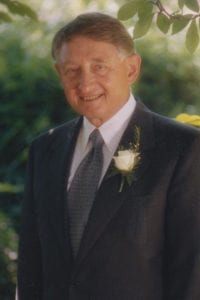
“In Germany the Ph.D. adviser is called the ‘Doktor Vater’ (Ph.D. Father) and that is exactly what Peter was to his students,” Thoennessen wrote. “In addition to being a brilliant scientist and a great administrator, Peter was an amazing mentor. I would not be where I am right now without Peter’s advice and guidance.”
Grannis added that despite a demanding career, Paul led a well-rounded life.
“He had a very broad range of interests not only in science but in music, in travel, in reading,” Grannis said. “He was very well-informed on many things.”
Paul was an ardent opera-goer and hiker, and Jung remembers the professor being in his 70s and still traveling upstate to go skiing. His career provided him the opportunity to travel extensively, too. Among his trips were vacations to his homeland of Germany.
In his lifetime, Paul received numerous awards including the American Physical Society Fellow, Institute of Physics Fellow, Sloane Research Fellow, Alexander von Humboldt Senior Scientist Award and the Order of Merit First Class from the German government. Paul is also an inductee in the Long Island Technology Hall of Fame. However, his greatest honor may be the legacy he leaves behind at Stony Brook University.
“Peter was one of the people that made us a better university,” Lee said. “He was active in associating us with Brookhaven, and he was always a booster of the university, and we always boosted Peter. It was hard to keep him because he was recognized as a top scientist. He turned down some very good offers to stay here.”
Sprouse said Paul inspired many to come to SBU and helped them, with his encouragement and leadership, to develop their careers.
“I just think that he was somebody that was really dedicated to the university and wanted to build it,” he said. “For those of us who were at Stony Brook, 40, 50 years ago, Stony Brook was kind of a dream, and Peter really made it a reality.”










